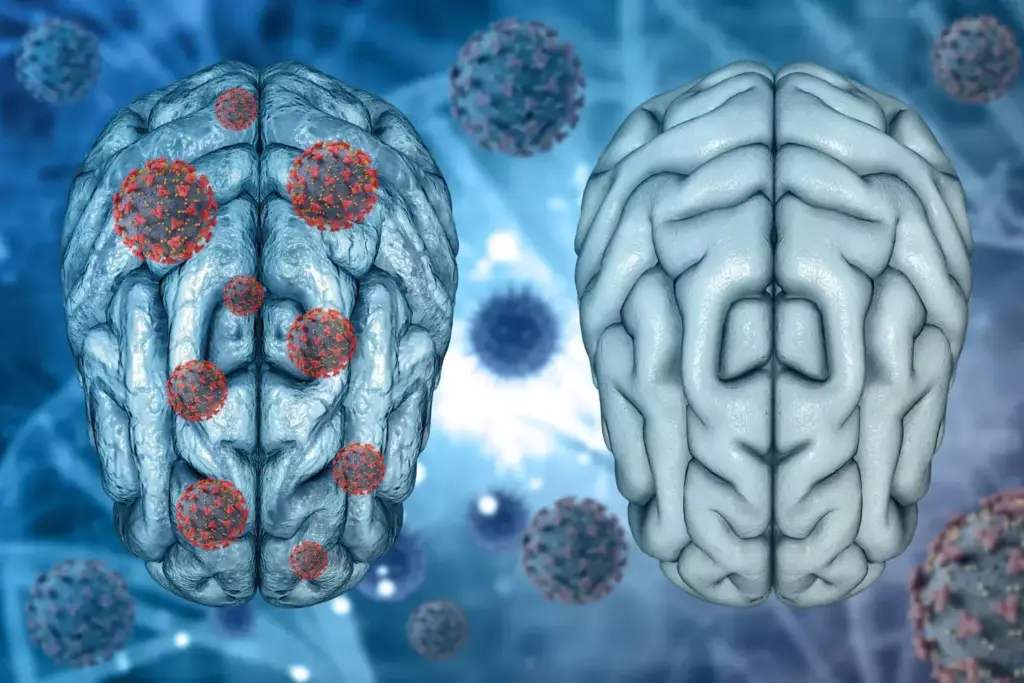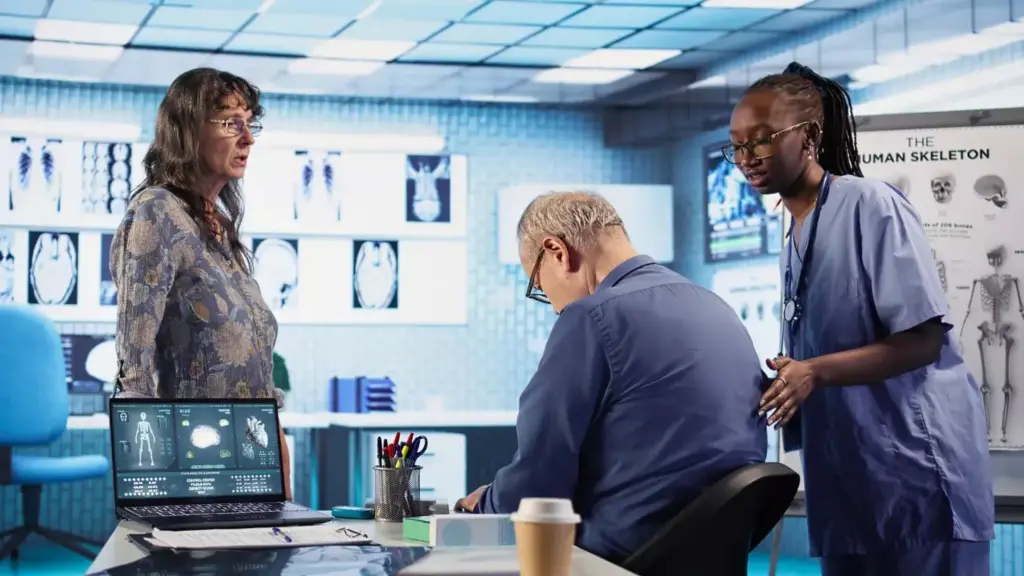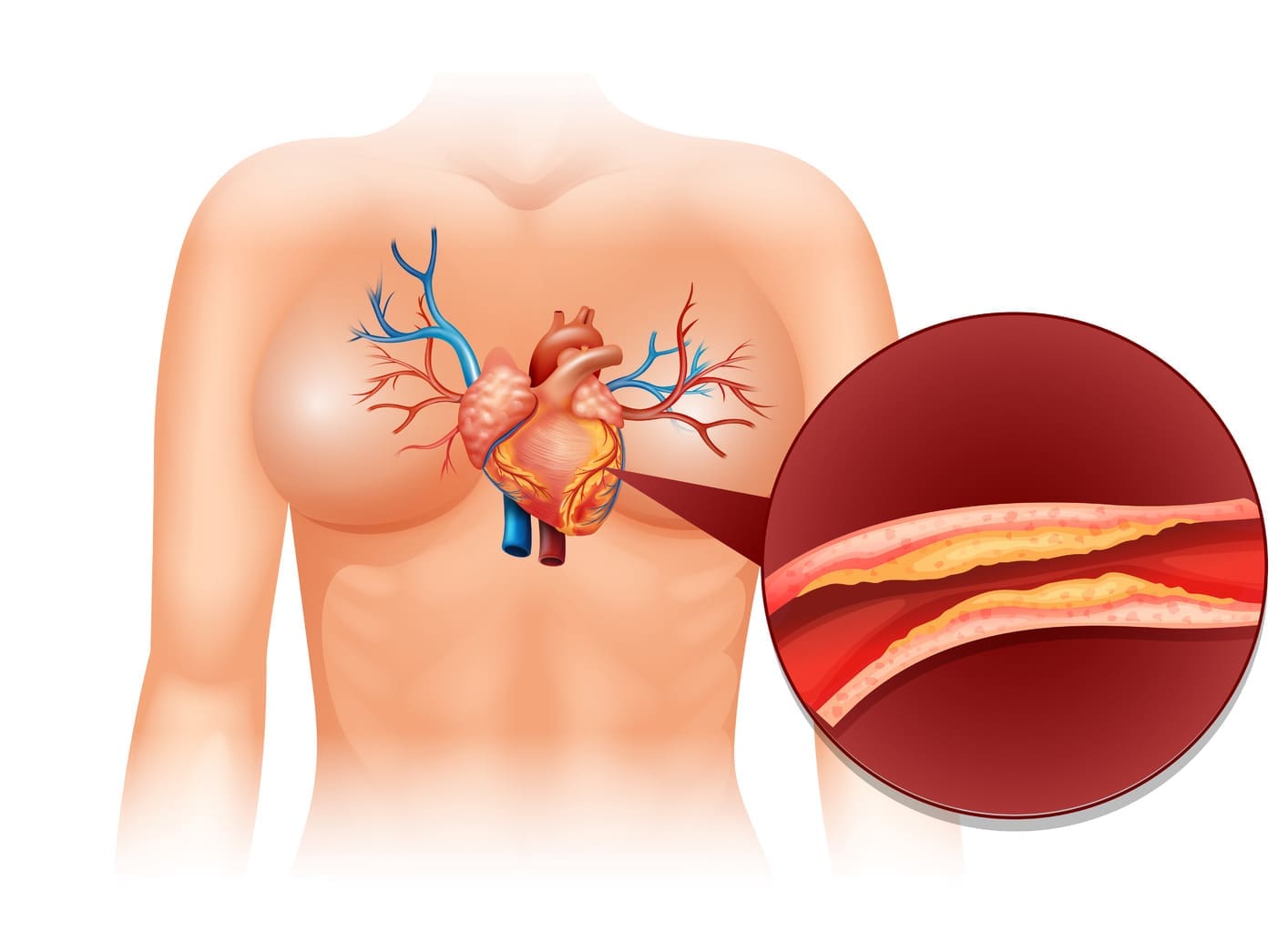Last Updated on November 27, 2025 by Bilal Hasdemir

At Liv Hospital, we are dedicated to finding new ways to help brain cancer patients. Recent discoveries in treatment options bring hope to those dealing with this tough disease.
We lead in advanced brain cancer treatment, using the latest therapies like MT-125 and Fusion Superkine molecules. Our focus is on the patient, ensuring they get the best care possible, no matter where they’re from.
Key Takeaways
- Advanced brain cancer treatment options are available, giving patients new hope.
- Liv Hospital is committed to finding innovative solutions for brain cancer patients.
- Cutting-edge therapies, such as MT-125 and Fusion Superkine molecules, are being used.
- We take a patient-centered approach, ensuring international patients get the care they need.
- Recent breakthroughs in brain cancer treatment are leading to better outcomes for patients.
Understanding Brain Cancer: Types, Causes, and Diagnosis
Brain cancer diagnosis starts with knowing the different types of brain tumors. We will look at their causes and how they are found. This will give you a full picture of brain cancer.
Common Types of Brain Tumors and Their Characteristics
Brain tumors are divided into primary and secondary types. Primary tumors start in the brain, while secondary ones spread from other parts. Gliomas, meningiomas, and acoustic neuromas are common primary tumors. Each needs a specific treatment plan.
Gliomas come from brain cells called glial cells. They vary in severity, with glioblastoma being the most serious. Knowing the tumor’s type and grade is key to choosing the right treatment.
Risk Factors and Warning Signs
Some risk factors for brain tumors include radiation exposure and family history. Genetic conditions also play a role. Common signs include headaches, seizures, and changes in thinking.
For more on silent brain tumors, check out resources on brain tumor diagnosis and care.
Diagnostic Procedures and Imaging Techniques
Diagnosing brain cancer uses imaging and tests. Magnetic Resonance Imaging (MRI) and Computed Tomography (CT) scans help see the tumor. Biopsy and histopathology confirm the diagnosis and tumor type.
Advanced scans like functional MRI and PET scans offer more details. They help plan treatment. Accurate diagnosis is vital for a good treatment plan.
How Do You Treat Brain Cancer: A Comprehensive Approach
Treating brain cancer effectively means using a mix of treatments. A team approach is key. It combines different treatments to meet each patient’s needs.
The Multidisciplinary Treatment Team
A team of experts is at the core of treating brain cancer. This team includes neurosurgeons, oncologists, and more. They work together to create a treatment plan that fits each patient’s situation.
This team approach leads to better care. It ensures all aspects of treatment are considered. This includes surgery, radiation, and chemotherapy.
Factors Influencing Treatment Decisions
Many things affect how we treat brain cancer. These include the tumor type, its location, and the patient’s health. We also look at the latest research and clinical trials.
Understanding these factors helps us plan the best treatment. For example, where the tumor is can affect the treatment options.
Treatment Goals: Curative vs. Palliative Care
There are two main treatment goals for brain cancer. Curative treatments aim to remove the tumor and cure the patient. Palliative care focuses on easing symptoms and improving quality of life when a cure is not possible.
We help patients and their families choose the right goal. We discuss the benefits and risks of each option. This way, we make decisions together.
Surgical Interventions: First-Line Treatment Option
Treating brain cancer often starts with surgery to remove the tumor. Surgery is key in treating brain cancer. It can remove the tumor or shrink it, easing symptoms and improving life quality.
Craniotomy and Tumor Resection Techniques
A craniotomy is a surgery where part of the skull is taken off to reach the brain. Neurosurgeons can then remove the tumor or as much as they can. They aim to take out the tumor without harming the brain around it.
- Standard Craniotomy: This method removes a part of the skull to get to the tumor.
- Tumor Resection: The surgery removes the tumor, aiming for complete removal or a big reduction.
Minimally Invasive Surgical Approaches
Minimally invasive surgery is getting more common in brain operations. These methods use smaller cuts and special tools. They cause less damage and help patients heal faster.
- Endoscopic Surgery: Uses a thin, flexible tube with a camera and light to see the tumor.
- Laser Interstitial Thermal Therapy (LITT): This method uses laser heat to kill tumor cells.
Awake Brain Surgery and Brain Mapping
Awake brain surgery is done while the patient is awake. This lets surgeons watch brain function as they work. It’s very important for tumors near important brain areas.
- Brain Mapping: Finds the brain areas that control important functions like speech and movement.
- Awake Craniotomy: Allows surgeons to check brain function during surgery.
Post-Surgical Recovery and Rehabilitation
After surgery, patients need time to recover and may need rehab to get back lost skills. How well they recover depends on the tumor’s location, size, and their health.
Rehab might include physical, speech, and occupational therapy. These help patients become independent again and improve their quality of life.
Radiation Therapy: Second Treatment Option
Radiation therapy is a key treatment for brain cancer. It uses different techniques to kill cancer cells while keeping healthy tissue safe. We use it for tumors that can’t be removed or to get rid of any cancer cells left after surgery.
External Beam Radiation Therapy
External Beam Radiation Therapy (EBRT) uses a machine outside the body to send beams of radiation to the tumor. This method targets the tumor well while protecting healthy tissues nearby.
EBRT is often given in many sessions over time. This way, it damages cancer cells more while healthy cells can recover between treatments.
Stereotactic Radiosurgery: Gamma Knife and CyberKnife
Stereotactic Radiosurgery (SRS) is a precise radiation therapy that gives a high dose of radiation to a specific area. Gamma Knife and CyberKnife are used for small, well-defined tumors with little harm to the brain.
SRS is great for tumors hard to reach surgically or for those not good for traditional surgery.
Proton Therapy and Its Advantages
Proton Therapy uses protons instead of X-rays to kill cancer cells. It delivers a focused dose of radiation to the tumor, reducing damage to healthy tissues nearby.
This is good for tumors close to important brain structures, where precision is key.
Managing Side Effects of Radiation Treatment
Radiation therapy is effective for brain cancer but can have side effects. These include fatigue, hair loss, and swelling in the treated area. We help patients manage these side effects with supportive care.
Supportive care may include medicines to reduce swelling, counseling for emotional support, and therapies to help regain lost functions.
Chemotherapy Protocols: Third Treatment Option
Chemotherapy for brain cancer has improved a lot. It now offers more targeted and effective treatments. Chemotherapy is often used with surgery and radiation therapy to manage brain cancer.
Standard Chemotherapy Agents
Standard chemotherapy agents are key in treating brain cancer. Temozolomide is a top choice, mainly for glioblastoma. Other drugs like carmustine and lomustine are also used, often with other treatments.
Temozolomide and Other Common Drugs
Temozolomide is an oral drug that stops cancer cells from growing. It’s often given with radiation therapy to boost its effect. Drugs like bevacizumab target tumor blood vessels, slowing tumor growth.
Drug Delivery Challenges
Getting drugs past the blood-brain barrier is a big challenge. Researchers are finding new ways to deliver drugs directly to tumors.
Managing Chemotherapy Side Effects
It’s important to manage chemotherapy side effects. These can include fatigue, nausea, and hair loss. We help patients with personalized care plans to lessen these effects.
Understanding chemotherapy’s complexities helps us support patients better. We provide care that addresses both physical and emotional needs of brain cancer patients.
Targeted Molecular Therapies: Fourth and Fifth Options
Research is leading to new ways to fight brain cancer. Targeted molecular therapies focus on specific parts of cancer cells. This makes treatment more precise.
MT-125 and Cellular Motor Targeting Therapies
MT-125 is a new treatment that targets cancer cell motors. These motors help cancer cells grow and move. MT-125 could stop tumor growth and help patients.
Key Benefits of MT-125:
- Targets specific cellular mechanisms
- Potential to reduce tumor growth
- May improve patient survival rates
Fusion Superkine Molecules and Receptor Targeting
Fusion superkine molecules are a new way to fight cancer. They target cancer cell receptors, stopping signals that help tumors grow. This could make treatments more effective.
Anti-Angiogenic Therapies
Anti-angiogenic therapies stop new blood vessels from forming. Tumors need these vessels for oxygen and nutrients. By stopping them, these therapies can slow or stop tumor growth.
| Therapy Type | Mechanism of Action | Potential Benefits |
|---|---|---|
| MT-125 | Targets cellular motors | Halts tumor growth |
| Fusion Superkine Molecules | Targets specific receptors | Disrupts tumor signaling pathways |
| Anti-Angiogenic Therapies | Inhibits blood vessel formation | Cuts off tumor supply |
Personalized Medicine and Genetic Profiling
Personalized medicine is changing how we treat brain cancer. It uses genetic profiles to tailor treatments. This makes treatments more effective for each patient.
We’re working hard to improve treatments for brain cancer. Our goal is to give patients new hope and better options.
Immunotherapy Approaches: Sixth and Seventh Options
Immunotherapy is changing how we treat brain cancer. It uses the body’s immune system to fight the disease. This method offers new ways to tackle brain cancer.
Checkpoint Inhibitors for Brain Tumors
Checkpoint inhibitors are a big step forward in treating brain cancer. They let the immune system attack cancer cells better. PD-1 inhibitors and CTLA-4 inhibitors are being tested for brain tumors.
Studies show they can shrink tumors in some patients. But, how well they work depends on the cancer type and the patient.
CAR-T Cell Therapy and Adoptive Cell Transfer
CAR-T cell therapy is getting attention for brain cancer. It takes a patient’s T cells, changes them to fight cancer, and puts them back in the body.
Early tests look promising, showing it can work on certain brain tumors. This personalized treatment might help some patients more.
Vaccine-Based Approaches for Brain Cancer
Vaccine-based treatments aim to get the immune system to fight brain cancer. These vaccines can target specific cancer markers or boost the immune response.
Researchers are looking at different vaccines. While they’re not ready yet, they could be future options.
Combination Immunotherapy Strategies
Combining immunotherapies with other treatments might make them work better. Scientists are trying different combinations to help brain cancer patients more.
One big challenge is getting treatments past the blood-brain barrier. New ways to deliver drugs and combine treatments are helping solve this problem.
| Immunotherapy Approach | Description | Potential Benefits |
|---|---|---|
| Checkpoint Inhibitors | Drugs that release brakes on the immune system | Enhanced immune response against cancer cells |
| CAR-T Cell Therapy | Modified T cells that target cancer cells | Personalized treatment with the chance for big tumor shrinkage |
| Vaccine-Based Approaches | Vaccines that stimulate immune response against tumor cells | Potential for long-term immune surveillance and tumor control |
As research goes on, immunotherapy will likely become more important for brain cancer treatment. There are challenges, but these new methods offer hope for patients and doctors.
Experimental Treatments: Eighth, Ninth, and Tenth Options
Recent advances in brain cancer treatment offer new hope. Several experimental options are being tested in clinical trials. These innovative methods aim to help patients with few treatment choices.
Tumor Treating Fields (TTFields) Technology
Tumor Treating Fields (TTFields) is a non-invasive method. It uses electric fields to stop cancer cells from dividing. This treatment is effective for certain brain cancers, like glioblastoma.
A device worn on the scalp delivers these electric fields. Clinical trials show TTFields can improve survival when combined with chemotherapy. It’s a big step forward for treating glioblastoma.
Gene Therapy and CRISPR Applications
Gene therapy is a promising approach for brain cancer. It aims to stop cancer cells from growing or kill them. CRISPR-Cas9 technology is being explored to target and destroy cancer cells precisely.
Early trials are looking into gene therapy’s safety and effectiveness. While challenges exist, it could change brain cancer treatment.
Convection-Enhanced Delivery Systems
Convection-enhanced delivery (CED) delivers treatments directly to brain tumors. It gets past the blood-brain barrier, a major challenge in treating brain cancer.
CED has shown promise in trials. It delivers drugs directly to tumors, reducing side effects. Researchers are working to improve CED and find the best treatments.
Clinical Trials and Access to Cutting-Edge Treatments
Clinical trials are key in advancing brain cancer treatment. They offer patients access to new therapies. We encourage patients to talk to their doctors about trial options.
There are resources to help find clinical trials. Online databases and patient groups can assist. By joining trials, patients get new treatments and help research progress.
We’re committed to providing the latest treatments for brain cancer. By using the newest therapies and care, we aim to improve outcomes and quality of life for our patients.
Conclusion: Can Brain Tumors Be Cured?
Exploring treatment options for brain cancer shows us there’s hope for a cure. Advances in surgery, radiation, and chemotherapy offer new chances for better treatment results. These advancements give us hope for the future.
Whether a brain tumor can be cured depends on several things. These include the tumor’s type, size, and where it is, plus the patient’s health. With the right treatment, many can see their tumors shrink or even disappear.
Research and innovation are key to better treatments for brain cancer. By advancing medical science and providing full care, we aim for a future where more can be cured.
FAQ
What are the common treatment options for brain cancer?
We offer many treatments for brain cancer. These include surgery, radiation, and chemotherapy. We also use targeted molecular therapies, immunotherapy, and new treatments like tumor treating fields and gene therapy.
How is brain cancer diagnosed?
We use advanced tests like MRI and CT scans to find brain cancer. These help us know the type and stage of the tumor.
What is the role of a multidisciplinary treatment team in brain cancer care?
Our team works together to create a treatment plan for each patient. This ensures the best care and outcomes.
Can brain tumors be cured?
The chance of curing brain cancer depends on the type and stage. But, thanks to new treatments, some tumors can be cured with the right care.
What are the benefits of targeted molecular therapies in brain cancer treatment?
Targeted therapies like MT-125 and fusion superkine molecules are more precise. They reduce side effects and improve treatment results.
How does immunotherapy work in brain cancer treatment?
Immunotherapy uses the immune system to fight cancer. It includes checkpoint inhibitors, CAR-T cell therapy, and vaccines. It offers new hope for patients.
What are tumor treating fields, and how do they work?
Tumor treating fields (TTFields) are a non-invasive treatment. They use electric fields to stop cancer cells from dividing. This slows tumor growth and improves treatment results.
Are clinical trials available for brain cancer treatment?
Yes, we offer clinical trials for brain cancer. This gives patients access to the latest treatments and care.
How do you manage side effects associated with brain cancer treatment?
We provide full care for side effects from treatments like radiation, chemotherapy, and immunotherapy. We make sure patients get the support they need.
What is the importance of genetic profiling in brain cancer treatment?
Genetic profiling helps us understand the tumor’s genetics. This allows for personalized medicine and targeted therapies. It improves treatment outcomes.








